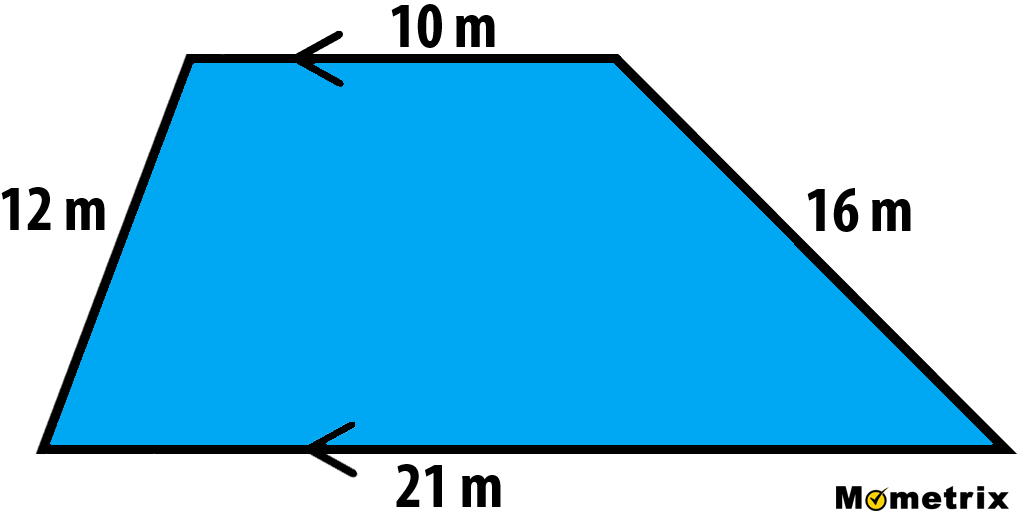Topic perimeter of an oval: Explore the intriguing world of geometry with our comprehensive guide on the "Perimeter of an Oval." This article delves into the fascinating aspects of calculating this essential geometric parameter, perfect for enthusiasts and scholars alike.
Table of Content
- Definition and Basic Concepts of Ovals
- YOUTUBE: Perimeter of an Ellipse: Why is there no equation?
- Comparison Between Oval and Circle
- Historical Background and Real-Life Examples of Ovals
- Formulas for Calculating the Perimeter of an Oval
- Ramanujan\"s Approximations for Oval Perimeter
- Using Integral Calculus for Perimeter Calculation
- Tools and Calculators for Oval Perimeter
- Geometric Properties and Measurements of Ovals
- Practical Applications and Importance of Oval Perimeter
- Frequently Asked Questions and Misconceptions About Ovals
Definition and Basic Concepts of Ovals
An oval, often interchangeably used with the term ellipse in geometry, is a curve resembling a stretched or elongated circle. Unlike a circle, an oval does not have a constant radius. Instead, it is defined by two principal axes:
- Major Axis: The longest diameter of the oval, stretching across its widest point.
- Minor Axis: The shortest diameter, bisecting the oval at its narrowest.
The intersection of these axes marks the oval\"s center. This shape can be visualized as a circle that has been compressed or extended along one of its axes, resulting in a symmetrical but non-uniform curve.
Ovals have several unique properties, which include:
- A perimeter, known as the circumference, that encloses the shape.
- Two focal points, or foci, lying on the major axis, equidistant from the center.
- The sum of the distances from any point on the oval to each focus is constant.
These characteristics make ovals fascinating subjects in both pure and applied mathematics, with applications ranging from astronomy to engineering. Understanding the perimeter of an oval is crucial, as it extends to various fields, including architectural design, mechanical engineering, and even in understanding planetary orbits.
In the following sections, we will explore the various methods and formulas used to calculate the perimeter of an oval, offering insights into both simple approximations and more complex mathematical approaches.
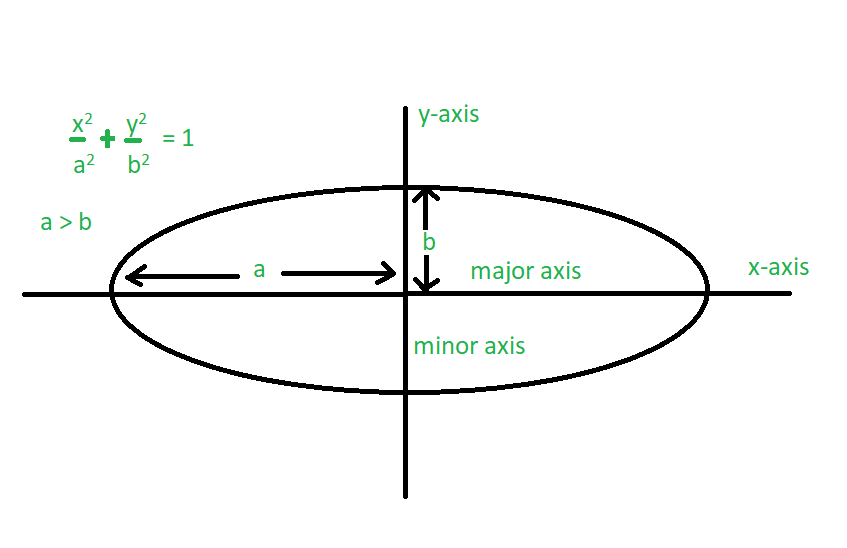
READ MORE:
Perimeter of an Ellipse: Why is there no equation?
\"Discover the beauty of equations as we unravel the mysteries behind these mathematical puzzles. Join us on an exciting journey as we explore the endless possibilities and fascinating patterns that equations can reveal. Get ready to dive into the world of mathematics!\"
Oval Ground: Calculating the Area and Perimeter
\"Explore the captivating world of area measurements and witness how it shapes our everyday lives. From calculating the area of your favorite park to understanding the importance of area in architecture, this video will enlighten you on the significance of this mathematical concept.\"
Ellipse Circumference: How to Find It?
\"Step into the realm of circles and uncover the secrets of circumference. Delve into the history and applications of this intriguing mathematical concept, from measuring the circumference of objects to understanding the relationship between diameter and circumference. Prepare to be amazed!\"
Comparison Between Oval and Circle
Understanding the differences between an oval (ellipse) and a circle is crucial for comprehending their perimeters. A circle is a special case of an ellipse, characterized by all points on its boundary being equidistant from the center, resulting in a constant radius. In contrast, an oval or ellipse lacks this uniformity.
- Shape and Symmetry: While a circle has a uniform shape with symmetrical distribution around its center, an oval has an elongated form with two axes of symmetry - the major and minor axes.
- Foci: Unlike a circle, which has a single central point, an oval has two focal points. The sum of the distances from these foci to any point on the ellipse is constant.
- Perimeter Formulas: Calculating the circumference of a circle is straightforward using the formula (C = 2πr). However, determining the perimeter of an oval is more complex. Ramanujan\"s approximations are often used for this purpose, providing a balance between simplicity and accuracy.
- Eccentricity: The concept of eccentricity differentiates a circle and an oval. A circle has an eccentricity of 0, indicating a perfect round shape. In contrast, an oval has an eccentricity greater than 0 but less than 1, signifying its elongated nature.
These distinctions are important in applications ranging from geometry to astronomy, where understanding the nuances of these shapes and their perimeters can lead to more precise calculations and designs.
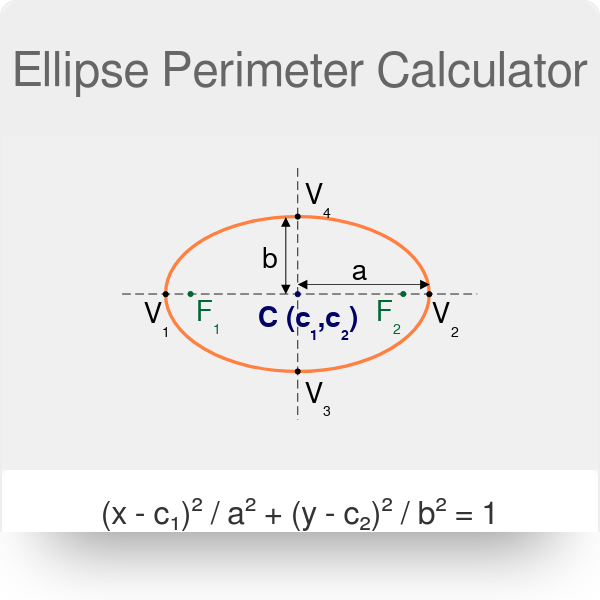
Historical Background and Real-Life Examples of Ovals
The history of ovals, or ellipses, is deeply rooted in mathematics and astronomy. The study of ellipses dates back to ancient Greek mathematicians like Menaechmus and Euclid, and was further developed by Apollonius who coined the term. The focus and directrix of an ellipse, fundamental concepts in geometry, were explored by Pappus. Johannes Kepler, in the early 17th century, made significant contributions by demonstrating that planetary orbits, including that of Mars, were elliptical with the Sun at one focal point.
Ovals are not only prevalent in mathematics but also in everyday life. They appear in various forms and structures, from architectural designs to natural objects. For instance, the shape of an egg or an avocado is typically oval. In sports, running tracks often adopt an elliptical shape. Furthermore, ellipses play a crucial role in aeronautics, with the design of some aeroplane wings and boat keels resembling the elliptical shape for aerodynamic efficiency.
Interestingly, a circle is a special case of an ellipse where both axes are of equal length, resulting in a constant radius. This geometric relationship underscores the versatility of ovals in both theoretical and practical applications, extending their significance beyond mere mathematical constructs.
Formulas for Calculating the Perimeter of an Oval
Calculating the perimeter of an oval, or an ellipse, involves complex mathematics, as there is no single, simple formula for its precise calculation. Various approximations and complex formulas are used to estimate the perimeter:
- Ramanujan\"s Approximation: One of the most popular methods for calculating the perimeter of an ellipse involves the use of approximations formulated by the Indian mathematician Ramanujan. One such approximation is ( P approx pi(a+b)(1 + frac{3h}{10 + sqrt{4 - 3h}}) ), where ( h = left(frac{a-b}{a+b}
- ight)^2 ), and ( a ) and ( b ) are the lengths of the semi-major and semi-minor axes respectively.
- Infinite Series Methods: These involve more complex calculations and can provide very close approximations. For example, one method uses an infinite series formula that expands in a series of calculations, becoming more accurate as more terms are calculated.
- Integral Formulas: The most accurate method for calculating the perimeter of an ellipse involves integral calculus. The formula ( P = 4a int_{0}^{pi/2} sqrt{1 - e^2 sin^2 heta} , d heta ) is used, where ( e ) is the eccentricity of the ellipse and ( a ) is the length of the semi-major axis.
Each of these methods varies in complexity and accuracy, and the choice of method often depends on the required precision and the context in which the perimeter is being calculated.

Ramanujan\"s Approximations for Oval Perimeter
Calculating the perimeter of an oval, or an ellipse, involves complex mathematics, as there is no single, simple formula for its precise calculation. Various approximations and complex formulas are used to estimate the perimeter:
- Ramanujan\"s Approximation: One of the most popular methods for calculating the perimeter of an ellipse involves the use of approximations formulated by the Indian mathematician Ramanujan. One such approximation is ( P approx pi(a+b)(1 + frac{3h}{10 + sqrt{4 - 3h}}) ), where ( h = left(frac{a-b}{a+b}
- ight)^2 ), and ( a ) and ( b ) are the lengths of the semi-major and semi-minor axes respectively.
- Infinite Series Methods: These involve more complex calculations and can provide very close approximations. For example, one method uses an infinite series formula that expands in a series of calculations, becoming more accurate as more terms are calculated.
- Integral Formulas: The most accurate method for calculating the perimeter of an ellipse involves integral calculus. The formula ( P = 4a int_{0}^{pi/2} sqrt{1 - e^2 sin^2 heta} , d heta ) is used, where ( e ) is the eccentricity of the ellipse and ( a ) is the length of the semi-major axis.
Each of these methods varies in complexity and accuracy, and the choice of method often depends on the required precision and the context in which the perimeter is being calculated.
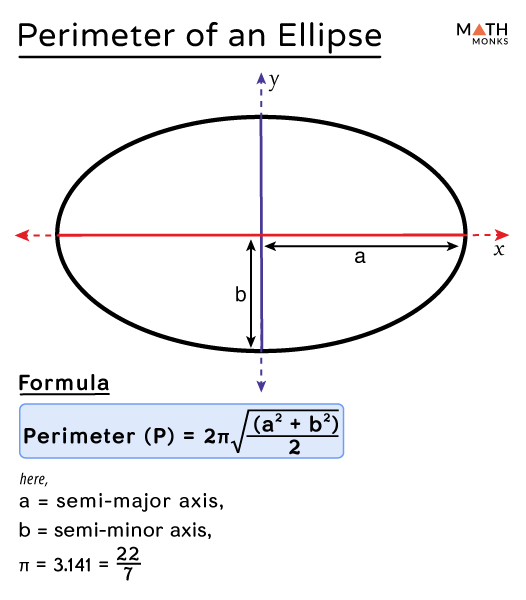
_HOOK_
Using Integral Calculus for Perimeter Calculation
Calculating the perimeter of an oval, or an ellipse, involves complex mathematics, as there is no single, simple formula for its precise calculation. Various approximations and complex formulas are used to estimate the perimeter:
- Ramanujan\"s Approximation: One of the most popular methods for calculating the perimeter of an ellipse involves the use of approximations formulated by the Indian mathematician Ramanujan. One such approximation is ( P approx pi(a+b)(1 + frac{3h}{10 + sqrt{4 - 3h}}) ), where ( h = left(frac{a-b}{a+b}
- ight)^2 ), and ( a ) and ( b ) are the lengths of the semi-major and semi-minor axes respectively.
- Infinite Series Methods: These involve more complex calculations and can provide very close approximations. For example, one method uses an infinite series formula that expands in a series of calculations, becoming more accurate as more terms are calculated.
- Integral Formulas: The most accurate method for calculating the perimeter of an ellipse involves integral calculus. The formula ( P = 4a int_{0}^{pi/2} sqrt{1 - e^2 sin^2 heta} , d heta ) is used, where ( e ) is the eccentricity of the ellipse and ( a ) is the length of the semi-major axis.
Each of these methods varies in complexity and accuracy, and the choice of method often depends on the required precision and the context in which the perimeter is being calculated.

Tools and Calculators for Oval Perimeter
Calculating the perimeter of an oval (ellipse) is a complex task, but there are several tools and calculators available online that make this process easier. These tools typically require the input of the semimajor and semiminor axes of the ellipse to calculate the perimeter using various approximations.
Online Calculators
- Ellipse Perimeter/Circumference Calculator: This tool uses Ramanujan\"s second approximation for calculating the ellipse\"s perimeter. It is one of the most accurate methods available. Users need to enter the lengths of the semimajor and semiminor axes, and the calculator will provide the perimeter and area.
- Math is Fun Ellipse Perimeter Tool: This calculator offers multiple approximation formulas, including Ramanujan\"s approximations and infinite series calculations. It provides an interactive way to understand the complexity involved in calculating the perimeter of an ellipse.
Formulas Used in Calculations
Several formulas are used by these calculators to approximate the perimeter of an ellipse. Two notable approximations by Ramanujan are commonly used:
- Ramanujan\"s First Approximation: Provides a relatively simple calculation that is accurate for ellipses that are not excessively elongated.
- Ramanujan\"s Second Approximation: Offers a more complex but accurate formula, particularly useful for online calculators.
In addition, some calculators employ infinite series methods for more precise calculations, though these are more complex and involve more extensive computations.
Practical Considerations
When using these tools, it\"s important to remember that most formulas provide approximations. The exact perimeter of an ellipse can be challenging to calculate, and the results may vary slightly depending on the method used. Additionally, the accuracy of the calculation depends on the ratio of the semimajor to semiminor axes.
Conclusion
Online calculators are a valuable resource for quickly and accurately estimating the perimeter of an ellipse. Whether for educational purposes or practical applications, these tools simplify a complex mathematical task.

Geometric Properties and Measurements of Ovals
An oval, often seen as an egg or ellipse-shaped curve, is a closed, two-dimensional geometric figure with no straight lines or vertices. It\"s important to understand its geometric properties and measurements for various applications.
Basic Properties of an Oval
- An oval is a 2D closed shape without any straight lines or vertices.
- It typically has one flat, curved face.
- Ovals can have a line of symmetry, depending on their specific shape.
- Unlike a circle, an oval does not have a constant distance from the center to its boundary.
Comparison with Circles and Ellipses
While ovals are often compared to circles and ellipses, there are distinct differences:
- Circles: All points on a circle\"s boundary are equidistant from the center, which is not the case with ovals.
- Ellipses: An ellipse is a special type of oval with two focal points and a more uniform shape. Every ellipse is an oval, but not every oval is an ellipse.
Construction of an Oval
There are various methods to construct an oval shape. For instance:
- Drawing a plus sign and then a curve around it, ensuring no straight lines or corners are formed.
- Using geometric tools like a compass to create intersecting arcs that form an oval.
Geometric Calculations for Ovals
Ovals have several measurable properties which can be calculated, such as:
- Area: Calculated using formulas based on the oval\"s dimensions.
- Perimeter: The length around the oval, which can be approximated using various mathematical formulas.
- Centroid: The point which corresponds to the center of mass of the oval.
- Moments of Inertia: Important in physical applications, these involve the distribution of mass around an axis.
Real-Life Applications
Ovals are prevalent in everyday life, from the design of mirrors and tables to sports tracks and architectural designs. Understanding their properties is crucial in fields like architecture, design, and engineering.
Conclusion
Understanding the geometric properties and measurements of ovals is essential for various academic and practical applications. Their unique shape and properties distinguish them from other geometric figures like circles and ellipses.

Practical Applications and Importance of Oval Perimeter
Understanding the perimeter of an oval has numerous practical applications across various fields. Here are some examples demonstrating the importance and utility of this concept:
1. Land and Property Management
In agriculture and real estate, determining the perimeter of land parcels is crucial. It aids in tasks like fencing, plot division, and landscape design. Perimeter measurements are essential for property boundary demarcation and management.
2. Architecture and Construction
Architects and builders use perimeter calculations in the design and construction of buildings. Accurately measuring the perimeter helps in efficient space utilization and material estimation, crucial for project planning and execution.
3. Graphic Design and Gaming
Perimeter concepts find significant use in computer-aided graphic design and gaming. They help in creating accurate and realistic models, characters, and environments, enhancing the visual appeal and user experience.
4. Fashion and Art
In the fashion industry, the perimeter is used for fabric cutting and pattern design. In art, it assists in creating well-proportioned and aesthetically pleasing works, whether in painting, sculpture, or digital media.
5. Astronomy
The concept of perimeter is applied in astronomy for measuring planetary orbits and calculating distances in space. This aids in understanding celestial movements and planning space missions.
6. Gardening and Landscaping
Garden design and landscaping projects use perimeter measurements for fencing, planting layouts, and irrigation planning, ensuring efficient use of space and resources.
Conclusion
The practical applications of the oval perimeter extend across various fields, reflecting its fundamental role in spatial analysis, design, science, and daily life activities.

READ MORE:
Frequently Asked Questions and Misconceptions About Ovals
Ovals, often misunderstood in geometry, raise numerous questions and misconceptions. Here are some common inquiries and misunderstandings clarified.
FAQs About Ovals
- What is an Oval? An oval is a closed, curved, two-dimensional geometric figure, resembling an egg or an ellipse, with no straight lines or vertices and only one flat face.
- How is an Oval Different from a Circle? Unlike a circle, which has all points on its boundary equidistant from the center, an oval lacks a constant distance from the center to its boundary.
- Is an Oval a 2D Shape? Yes, an oval is a 2D shape with no vertices, having one curved side and a flat face.
- Are Ovals Symmetrical? Ovals often possess an axis of symmetry, dividing them into mirror-image halves, but this is not always the case. Some ovals have irregular or asymmetric outlines.
- What is a 3D Oval Called? The three-dimensional version of an oval is known as an ovoid.
Misconceptions About Ovals
- Ovals and Regular Curves: It\"s a common misconception that ovals are regular curves like circles. However, ovals have varying curvatures and are not uniformly symmetrical, making them unique in their geometry.
- Are Ovals Considered Polygons? No, ovals are not classified as polygons. A polygon must have straight sides, which ovals do not possess due to their curved nature.
- Ovals and Ellipses: There is often confusion between ovals and ellipses. While every ellipse is an oval, not every oval is an ellipse. Ellipses have two focal points and a more uniform shape, whereas ovals do not necessarily have a fixed geometry.
These clarifications provide a better understanding of ovals, their properties, and how they are distinct from other geometric shapes.
Discover the intriguing world of ovals in our comprehensive guide on their perimeter. Explore practical applications, geometric properties, and fascinating facts that unveil the elegance and complexity of this simple yet profound shape.
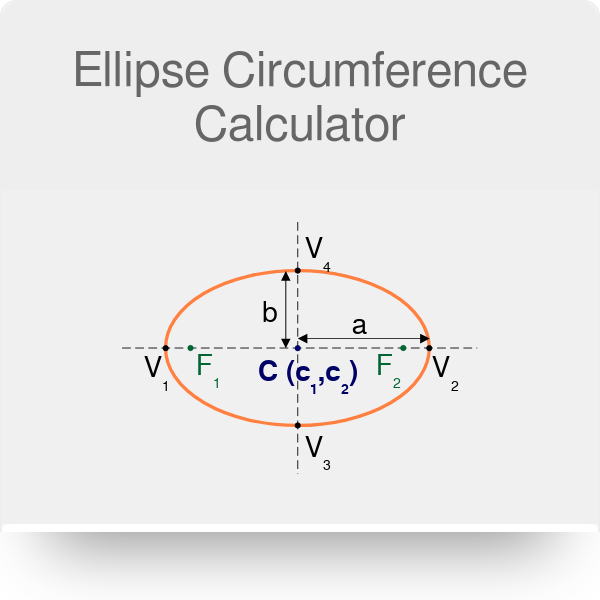
_HOOK_




